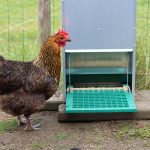Chicken Pecking Order: Who’s The Boss?
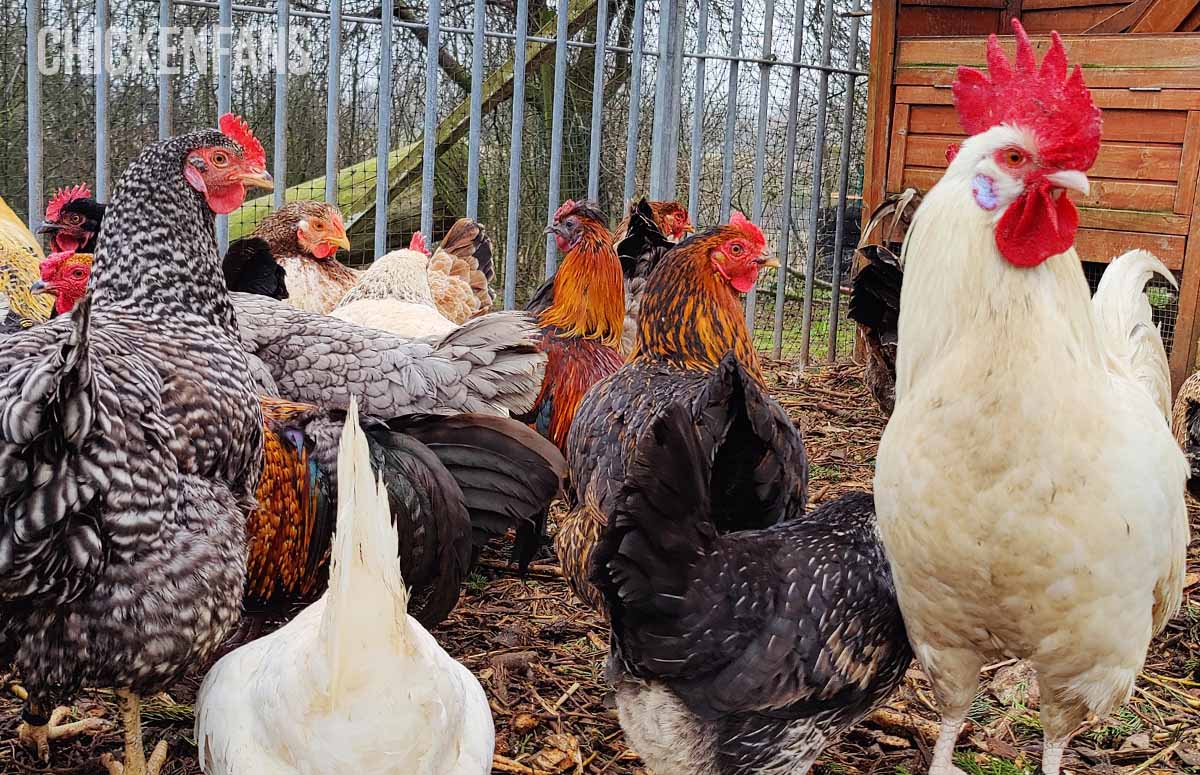
For society to function, there needs to be a rule or order in place. The same is true with birds, specifically chickens. Although a bit authoritarian, the pecking order maintains harmony within a flock, allowing the birds to follow a strict code of conduct and avoid constant fights and squabbles that could lead to chaos.
Establishing a hierarchy within the flock allows every bird to coexist with one another. This allows them to survive, and it provides stability to the entire flock.
Understanding the pecking order is key to raising a flock full of happy chickens. And so, we will tell you all about it, from how chickens determine the pecking order to which breeds match well with one another.
What Is The Pecking Order In Chickens?
The pecking order defines the role and placement of a chicken within a flock. Typically, the chicken at the top is the strongest and healthiest of them all. Without a pecking order, chaos will ensue. Imagine living in a world where there are no rules and laws in place for people to follow.
But worry not, as establishing the pecking order within a flock comes instinctively to all chickens. As such, you need not worry about stepping in and appointing a chicken to lead the others.
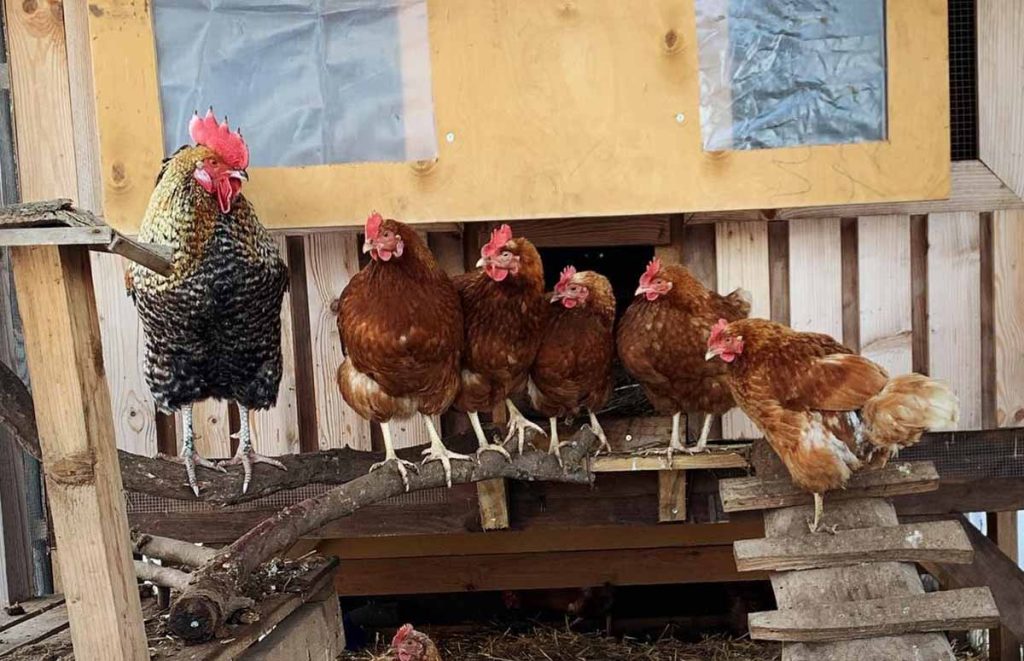
That is a good thing because the one at the top of the pecking order holds a lot of responsibility. The chicken at the top is the strongest and healthiest of them all. As such, the safety and survival of the flock fall on that chicken’s shoulders.
The chickens at the top are responsible for surveying the land, keeping the flock safe from predators and other dangers, leading the flock to potential food sources, and announcing the start of the day. So if you want to find out which chicken in your flock is the head honcho, be on the lookout for the rooster that crows first in the morning.
Without a rooster, the lead hen will carry this role.
With all these responsibilities, these chickens have special perks granted to them. That is the right to choose first, meaning they have first dibs on the best food, water, shelter, and roosting space.
How Is The Pecking Order Determined?
Chickens do peck one another to determine their place. But that’s not the only factor that determines the pecking order within a flock.
Some chickens will try to intimidate others, puffing their hackles and challenging others to a staredown until one backs off. For others, it’s all about showing off their size, whether it’s through their large bodies, combs, legs, or wattles. Others fight it out, lasting from a few seconds to a couple of minutes at times.
Breeds That Are High In The Pecking Order
Curious as to which chicken breeds are near or at the top of the pecking order? Then look no further, as this portion of the article will tell you all that you need to know. While there are some surprises, most are what you expect from the chicken breeds that rule the flock.
Larger Breeds
Chicken breeds like the Orpingtons, Australorps, and Brahmas are what many experienced chicken keepers call gentle giants. While they have the necessary tools to fight their way to the top, these breeds are usually content somewhere in the middle of the pecking order and sometimes near the bottom.
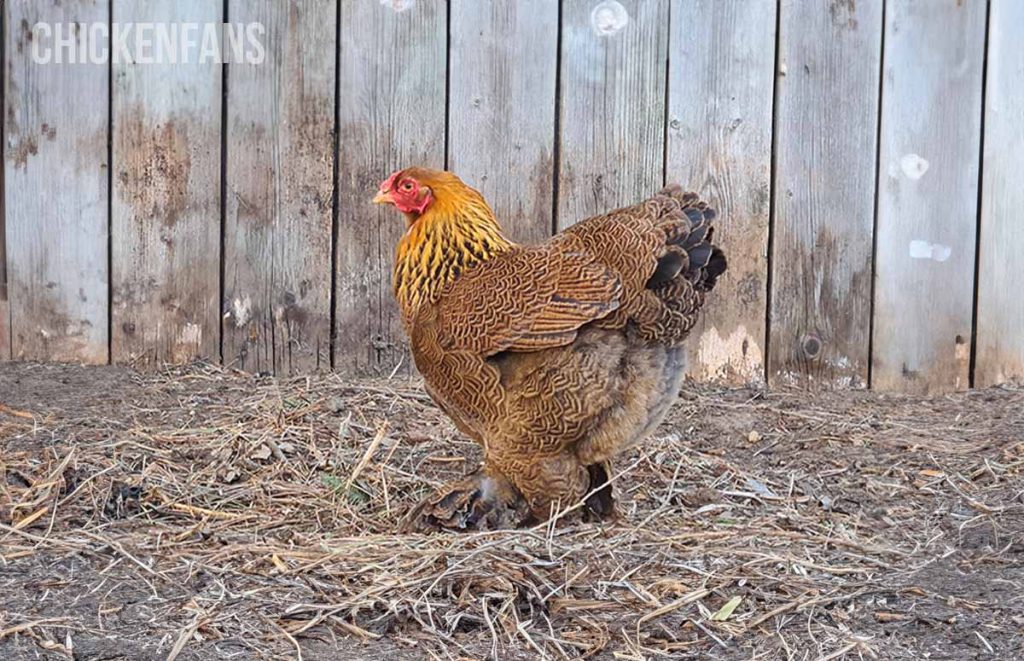
Raising them alongside smaller chicken breeds with the same personality will shoot these gentle giants to the top of the pecking order. That’s because their sheer size advantage gives them a clear edge over smaller chicken breeds that are as friendly and gentle as them.
While size does play a key role in determining a chicken’s position in the pecking order, it’s only one of many factors. As such, larger chicken breeds don’t necessarily stay near the top of the hierarchy, as it wholly depends on the rest of the flock.
Dominant Breeds
Pecking order is not always about size. More often than not, it’s about the personality of the breed.
Specifically, breeds that often show their dominance are usually at the top of the pecking order. Normally, these dominant breeds are active and will assert themselves over other chicken breeds.
While they’re gentle and easygoing to handle, that interaction doesn’t usually translate when it comes to other breeds. Some examples of these dominant breeds are the Wyandotte, Rhode Island Red, Plymouth Rock, and New Hampshire.
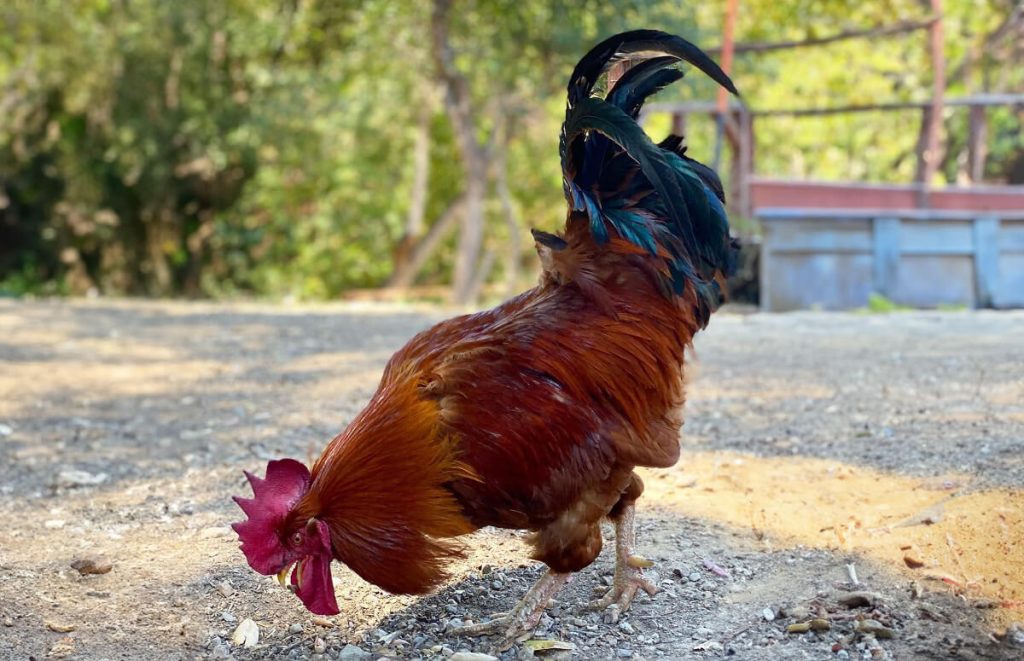
These breeds tend to make a lot of noise, strut off their feathers more, and are confident about their place in the pecking order. As such, don’t mix small or docile birds with these breeds to avoid problems like bullying.
Fighter Breeds
Last but not least are the fighter breeds. As their name implies, these breeds are well-known for their combat prowess.
They’re bred specifically for their aggressiveness. Two of the most aggressive chicken breeds are the Malay and the Old English Game. The Indio Gigante is a breed that comes from a line of aggressive chicken breeds and, as such, is placed in the same category as the ones mentioned previously.
These breeds share a lot of similarities with other dominant chicken breeds. The main difference is their temperament when it comes to the pecking order. Due to their aggressive personalities towards other birds, they can injure and sometimes kill when establishing the hierarchy within a flock.
Breeds That Are Mostly Low In The Pecking Order
As you can probably guess by now, the chicken breeds that occupy the pecking order’s lower rungs are small, weak, and have a gentle overall demeanor. Most bantam chickens are included in these rungs as well. Only bantam chickens with a feisty personality can fight their way out of these spots.
Silkies, Faverolles, Ayam Cemani, Orpingtons, Australorps, Cochins, Sussex, Pavlovskaya, and Polish, are just some of the chicken breeds occupying the pecking order’s bottom rungs.
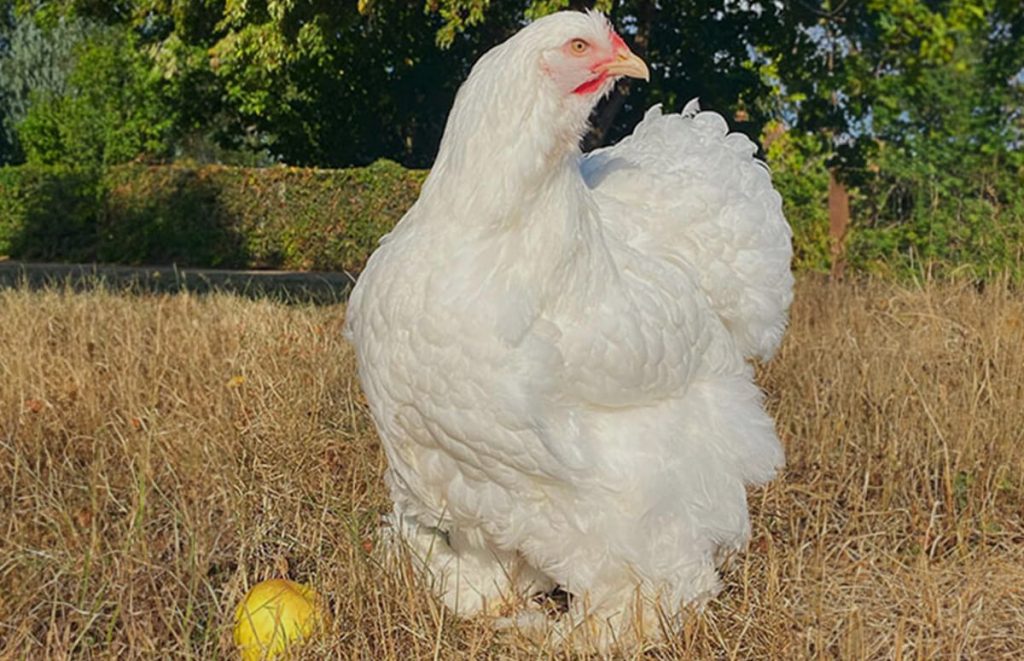
While reading through those chicken breeds, you probably noticed that two were previously mentioned as chickens that can rank high in the pecking order. And because of their size, that’s relatively true. However, compared to other dominant breeds, they lack the necessary personality to stay at the top, and as such, their positions in the pecking order vary depending on which chicken breeds you’re raising in a flock.
If you want to read more about specific breeds, please visit our ‘Breed‘ page. Or read about miniature chickens in our ‘Beginner-friendly small chicken breeds‘ article.
How Many Roosters Do I Keep?
Most experienced chicken keepers recommend one rooster to ten hens, which is the golden ratio. This is because it prevents competition within the flock while keeping the hens safe and healthy. Roosters can get overly aggressive during mating season. As such, there must be enough hens for a single rooster.
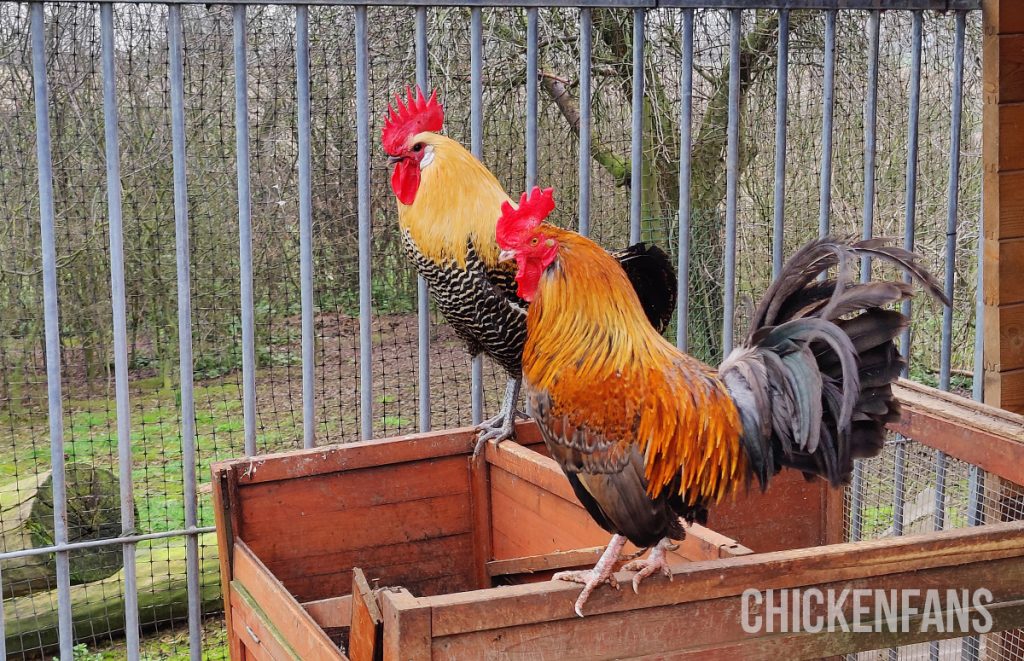
If there are too many roosters, fierce fights can break out between them for an opportunity to mate with one of the hens. If there are too few hens, the rooster can easily cause stress to the hens, causing them hens to lose feathers or get hurt during the mating process.
Of course, the golden ratio doesn’t apply to all breeds. When raising Silkies, the one rooster to six hens ratio works best. If you’re having trouble figuring out the ratio for a specific breed, apply the general rule of thumb: one rooster per flock.
Can You Reset The Pecking Order?
Yes, in case of bullying or an aggressive boss in the flock, you can rearrange the pecking order by removing the bully for a few days. By the time you introduce this member back into the flock, it will have to start at the bottom again.
But why would you want to reset the pecking order? Sometimes, problems crop up every once in a while within the flock. Bullying is a common problem that many experienced chicken keepers have to deal with.
The chicken at the bottom rung of the pecking order often gets bullied more often than usual. If you allow this to happen, the constant pecking can draw out blood from the bullied chicken, which could lead to cannibalism.
To avoid this, you must first remove the bullied chicken and observe what’s wrong with it. Treat its wounds and keep it segregated from the rest of the flock for a few days. After that, integrate the chicken back into the flock and keep a close eye on any signs of bullying in the following days.
This also works the other way around. In some cases, the alpha rooster or alpha hen exercises its privilege to feed first a bit too much, often not giving the other birds in the flock a chance to feed at all.
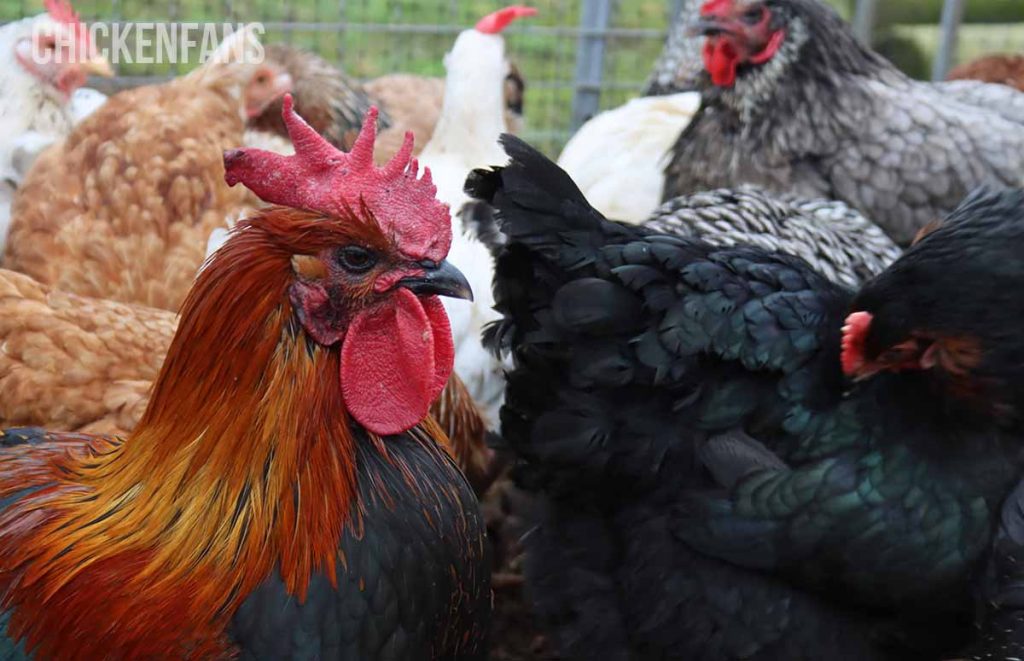
You’re resetting the pecking order by removing the problem bird for a few days. So, when you introduce the bullying rooster or hen back into the flock, it starts at the bottom of the pecking order and will need to work its way to the top again.
Chicken Breed Matches Made In Heaven
Their personalities matter a lot when trying to raise two or more different chicken breeds together in a single flock. For example, grouping dominant chickens with shy chickens is just a recipe for disaster. That’s why most experienced chicken keepers don’t try raising Silkies alongside Rhode Island Red chickens for the same reason.
Orpingtons and Australorps are two chicken breeds that can live harmoniously alongside one another. These two gentle giants are quite similar to each other, both in their personalities and how they interact with others.
Mixing in Silkies and Cochins with those gentle giants works as well. As long as both chicken breeds have similar personalities, they will get along in the same flock.
If you want to raise a more dominant chicken breed in your backyard, then it only makes sense for you to pair that with one that has the same personality. That way, they can stand up well to one another and establish a proper hierarchy within the flock that doesn’t tolerate bullying.
As for hybrid chickens and designer breeds, like the ISA Brown, Easter Eggers, Americana, or other laying hens, their personalities don’t stand out as much as the others on our list. So their interaction differs from one bird to another.
However, most consider hybrids to be friendly and gentle, and as such, they are good additions to a flock with similar traits.
Summary
The pecking order defines the role and placement of each chicken, with the strongest and healthiest typically occupying the top position. The top-ranked chickens have responsibilities such as protecting the flock, leading them to food sources, and announcing the start of the day.
Understanding the pecking order can help in raising your flock harmoniously.

